These Muammar Gaddafi facts illustrate that this controversial Libyan leader is marked by both unparalleled successes and dramatic failures.
Muammar Gaddafi came out of the Libyan hinterlands in the 1960s to overtake the oil-rich and underdeveloped country. Over more than 40 years in power, his bizarre personal style and boundless ambition created a Libyan state that seemed to have one part in a well-funded future utopia and another part in a regressive despotism.
Gaddafi’s rule would come to an end in 2011, when Libyan rebels, aided by the Arab League and the United States, killed him at the Battle of Sirte. Still, his persona and politics make him a figure of ceaseless fascination. These Muammar Gaddafi facts help illuminate why:
Nobody Knows When He Was Born

He Started As A Goat Herder
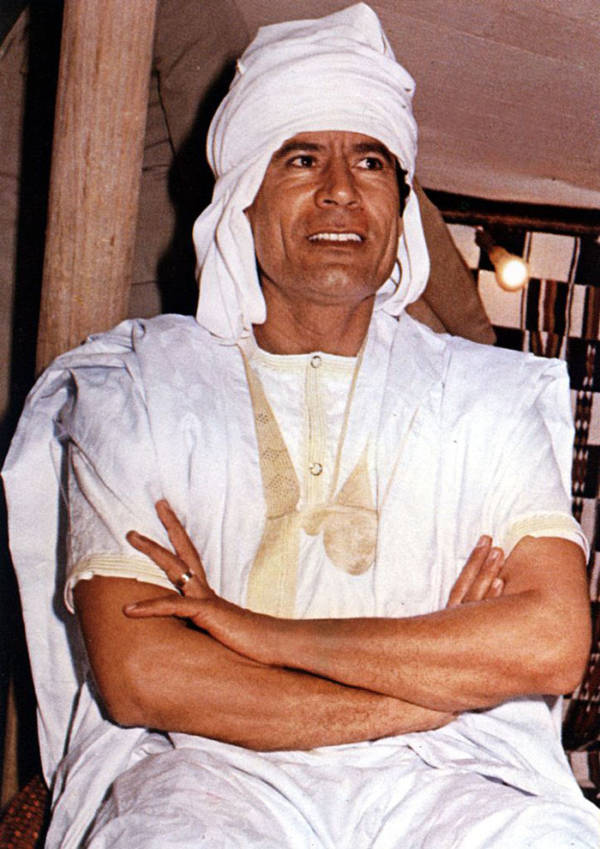
He was bullied at school
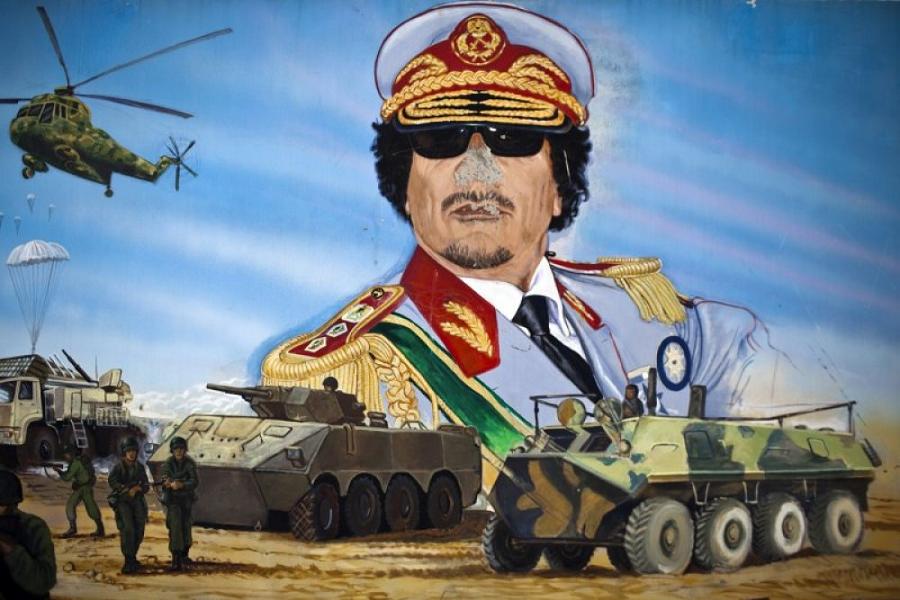
He became an activist for Bedouin pride as a child

Pictured: Bedouins at a well in Libya, 1942.Heinrich Hoffmann/ullstein bild via Getty Images
He started a riot at age 18

Before long, Gaddafi was active in street politics. When a demonstration led by Gaddafi at age 18 smashed the windows of a local hotel for serving alcohol, authorities detained and then expelled him from Sabha.Twitter/Svaboda
He received training from the British military
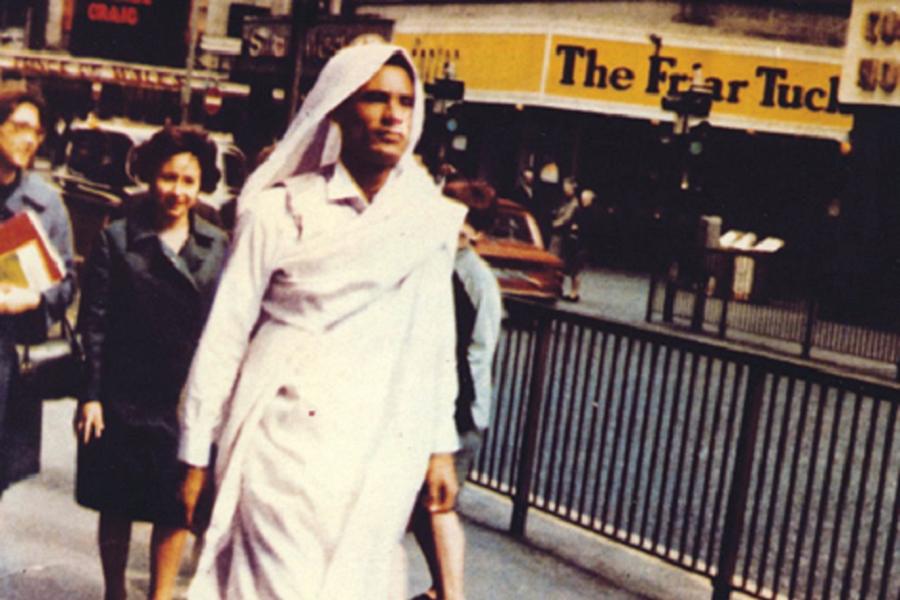
Perhaps because of this cunning avoidance of organized political activity, the authorities were willing to overlook Gaddafi's criminal record and admitted him to the Libyan military academy. Later, he would travel to England for training as a signals officer.Wikimedia Commons
He may have assassinated his academy headmaster
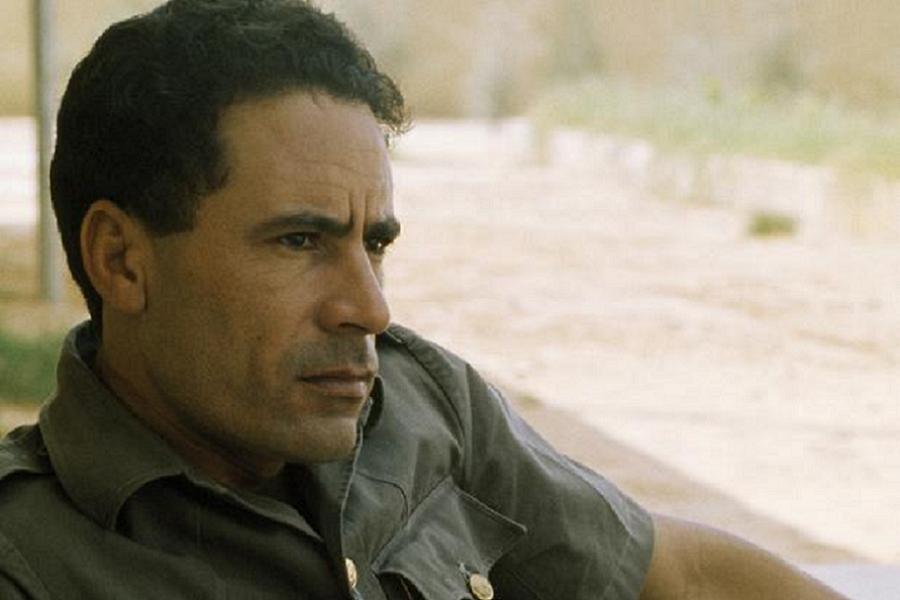
According to secret British records at the time, Gaddafi was suspected in the death of the Libyan academy commandant, with whom he had had several public disagreements.Wikimedia Commons
He took power in a totally bloodless coup

In a single day, without a shot fired, Idris' government fell and his son renounced the family's claim to the throne. The total lack of violence led to the revolt being dubbed the "White Revolution." Immediately, Gaddafi and his fellow revolutionaries abolished the monarchy, announced a socialist republic, and formed a guiding committee to steer the revolution toward a united Arab state.DPNI
He kept quitting his job as dictator

Resigning all of his government posts, he went back to his family's Bedouin tent until the committee asked him to return as its guardian. He did, but then he quit again in 1974, only to be begged to come back again and given the power to rule by decree. Muammar Gaddafi, the impoverished goat herder from the desert, was now in total control of an oil-rich one-party state.
Left: Gaddafi waves to demonstrators gathered to show support for his return after he resigns as leader of the Revolutionary Command Council.Genevieve Chauvel/Sygma/Sygma via Getty Images
He boosted Libya's GDP by 600 percent — in his first decade in power
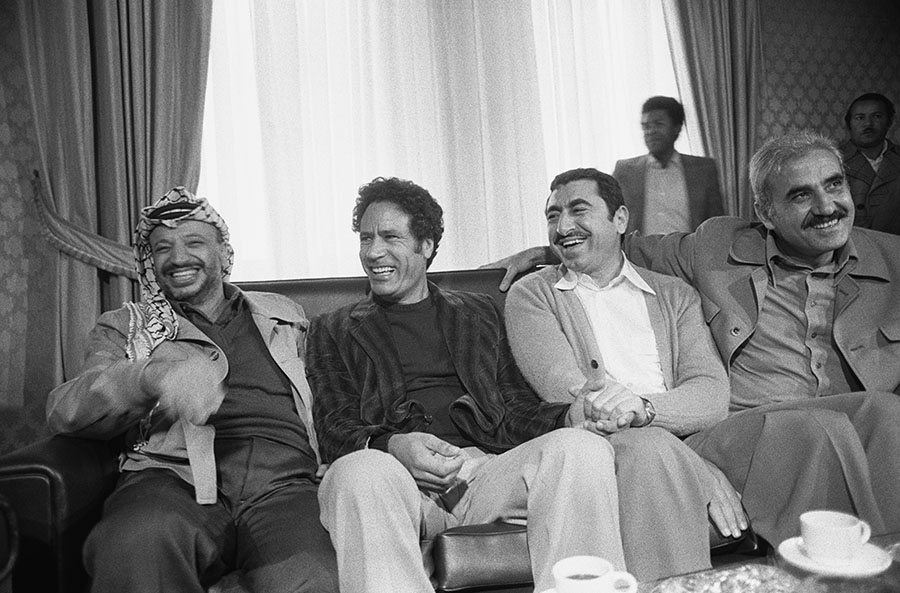
Gaddafi reacted by withdrawing from the UAR alliance and focusing on domestic reforms. By nationalizing his country's oil fields, Gaddafi became the first Arab head of state to claw back some of the profits foreign oil companies had extracted. He used the money for public works and education, and redistributed wealth among the lower classes. Libya's gross domestic product rose from around $3.5 billion in 1969 to over $20 billion by 1979.
Pictured: From left, Yasser Arafat of the Palestine Liberation Organization, Muammar Gaddafi, Nayef Hawatmeh of the Democratic Front for the Liberation of Palestine, and Georges Habache of the Peoples Front for the Liberation of Palestine. Alain Nogues/Sygma/Sygma via Getty Images
He wrote a book — and made it required reading
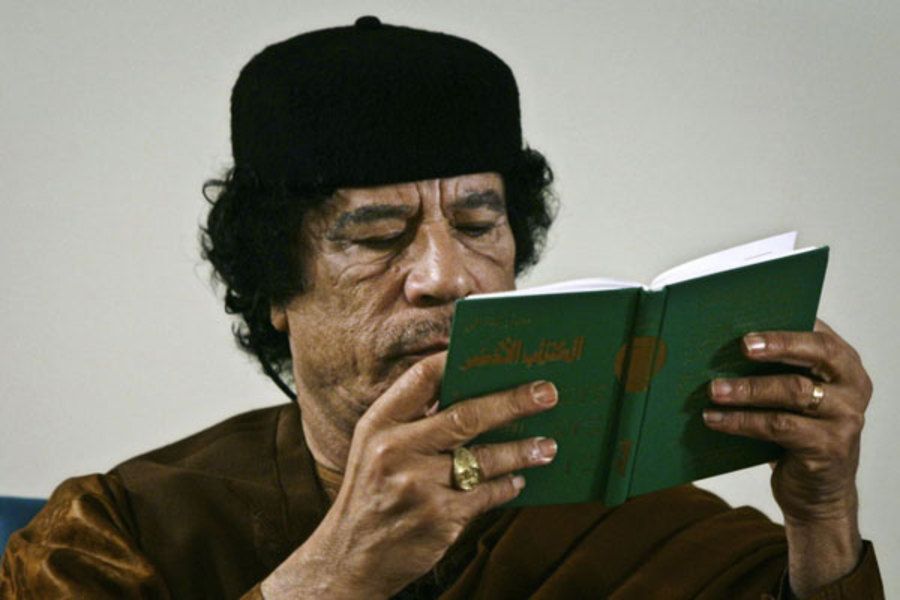
He made major strides in education

In just a few years, via an aggressive campaign of rural school building and educational initiatives to the Bedouins, Gaddafi managed to raise that figure to 83 percent, which still stands as one of the fastest rises in literacy in history.
Pictured: Gaddafi meets with Libyan high school students in Tripoli. Genevieve Chauvel/Sygma/Sygma via Getty Images
He carried a tent with him wherever he traveled
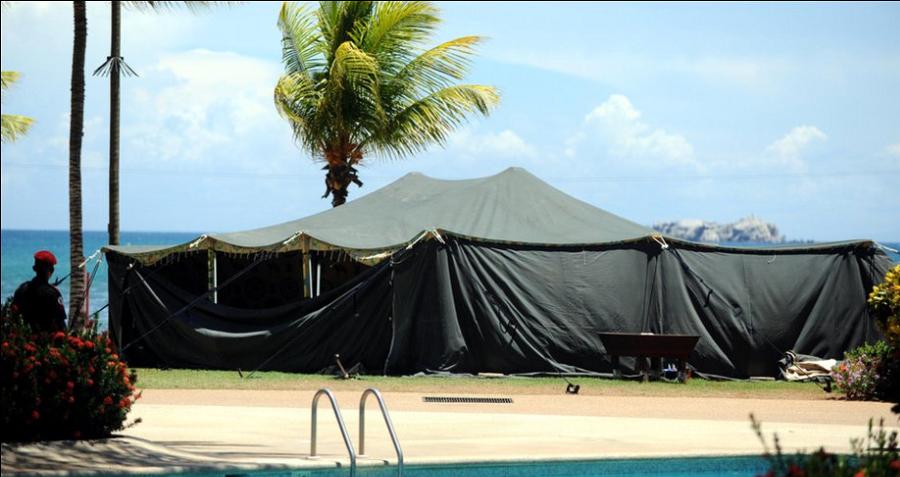
This, of course, may explain why he took a tent with him everywhere he went. Not just any tent, though: Gaddafi's tent was the size of a hotel and required its own airplane when he traveled overseas. When he went to address the UN, he was in the habit of pitching the tent in Portugal overnight and flying to New York early in the morning, after which he'd fly right back to Portugal.Wikimedia Commons
He had a fear of heights
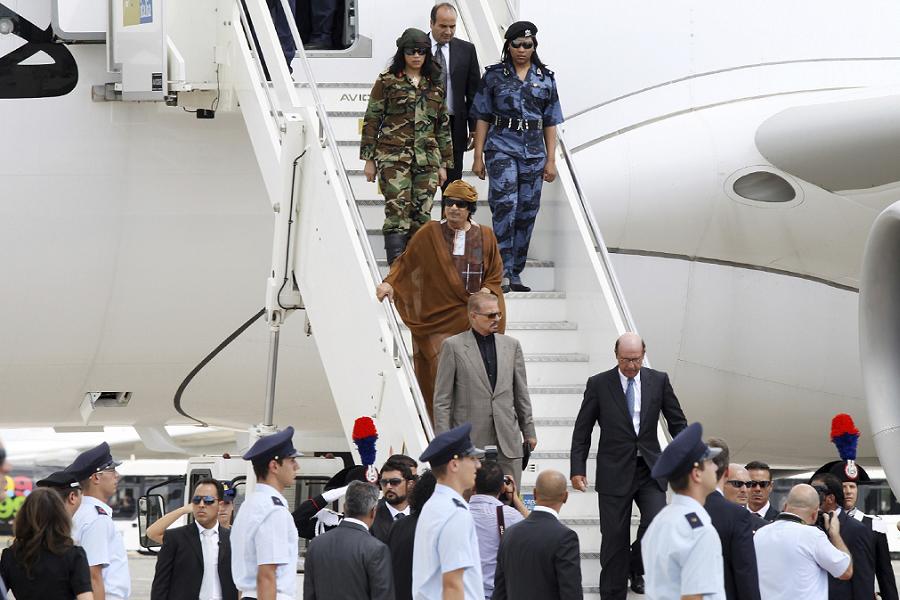
His bodyguards were female virgins
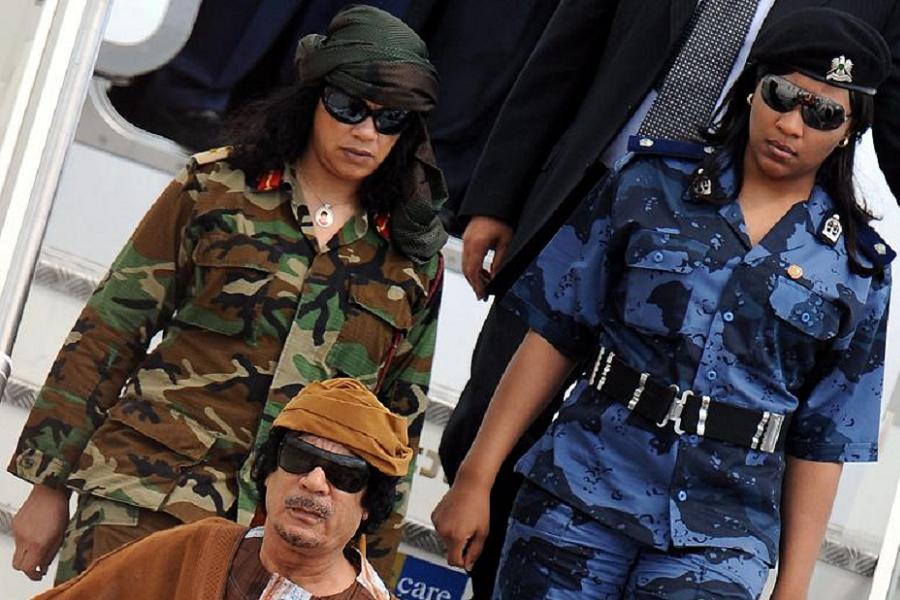
By the early 1980s, he seems to have been torn between a desire to hole up in his "bulletproof tent" and gratuitously indulging his libido. He even had a signal for his retinue when he wanted to sleep with a woman he met in public: as she walked away, he would pat her on the shoulder in a friendly gesture. As soon as he had passed, a member of his entourage would take the girl aside and "ask" her back to Gaddafi's palace.Getty Images
He indulged in the extravagant
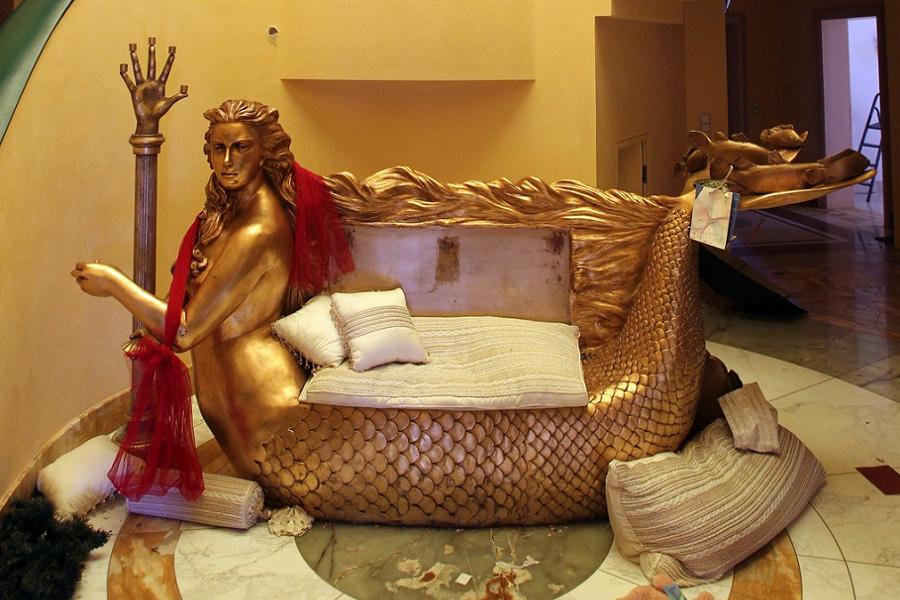
Visitors may have also set eyes on the world's largest golden gun collection and one of the world's best-stocked cabinets of liquor, which was illegal everywhere else in Libya. Of course, abortion was also illegal in Libya, and to get around that, Gaddafi built a large underground medical clinic where a full-time medical staff would abort the many pregnancies for which he was responsible. Twitter/Silvia Fehrmann
He had strange crushes
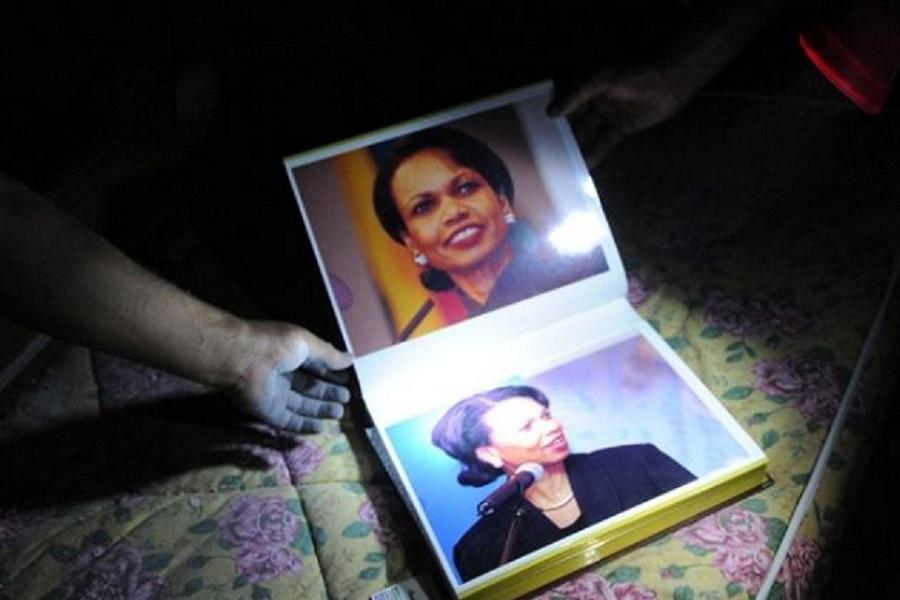
To be fair, rebels may have planted that when they stormed the palace. But even if it was propaganda, no one doubts Gaddafi had a real crush on US Secretary of State Condoleezza Rice. During an official visit to Libya, he called her "Leezza" and personally led her on a tour of his estate. He gave her a golden ring and a lute, and showered her with other gifts worth over $200,000. Gaddafi later called Rice a "proud black African queen," and kept a private photo album with hundreds of pictures of her in it.Daily Mail
He gave daily televised speeches that could run for hours
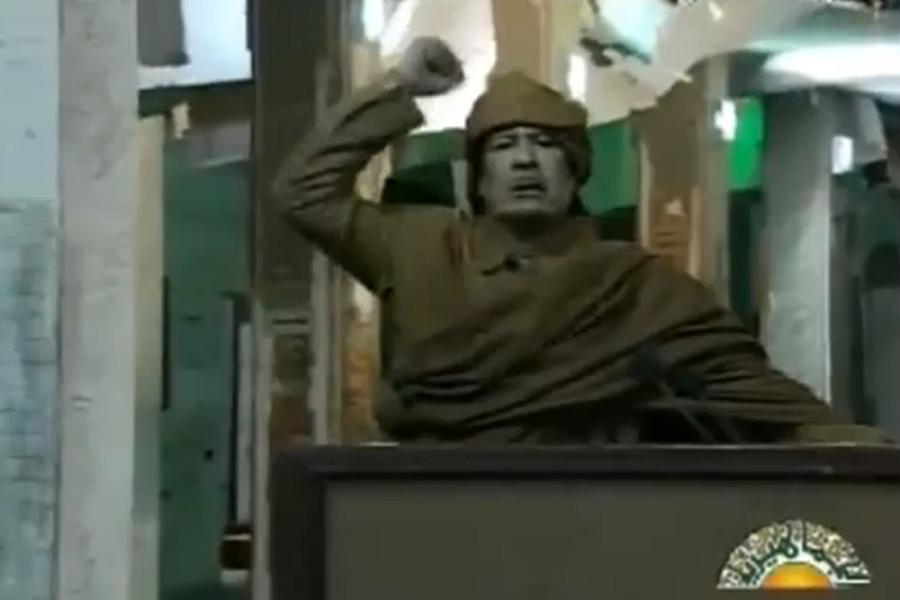
He had certainly done a better job of modernizing his country than most Shari'a-compliant dictators, but his eccentricity and general repression had grated on the Libyan people. Carrying around a three-volume book all the time was one thing, but Gaddafi made increasingly heavy demands on his people's patience.
His television broadcasts serve as a prime example of that. In the 1980s, Gaddafi had a television studio built inside his palace complex, from which he broadcast daily addresses to the nation that could go on for hours every day. Twitter/Kibatala
Intrigued by these Muammar Gaddafi facts? To learn more about contentious historical figures, check out these Osama bin Laden facts. Then, read up on the seven craziest dictators in history.





